Today you will be met at Windhoek Airport and transferred across to your hotel ready for a 1 night stay. Depending on the time of your flight, you may have the afternoon to relax at the hotel, or explore Windhoek.
We recommend that you have dinner at the world famous Joes Beerhouse this evening. It really is a Windhoek and Namibia institution. Great food, great atmosphere and fantastic decorations.



You will be collected at your Windhoek accommodation between 09H00 & 09h30
We start our journey south on the main highway, traveling through the thin strip of Kalahari Desert that protrudes onto the eastern side of Namibia. Stopping at small towns along the way including Rehoboth, traditional home of the Baster people and on to Kalkrand where you bid the main road farewell and head off into the Kalahari. The Kalahari Desert often surprises people when they first see it. It is very different from the Namib. First of all, remember that the Kalahari is not a desert. It receives more rain than a true desert should. The Kalahari is a fossil desert. Don’texpect to find tall Sossusvlei-style dunes devoid of greenery here. The Kalahari’s dunes are very different. They areoften equally beautiful, but usually greener and less stark – and with this vegetation comes its ability to support more flora and fauna than a true desert.
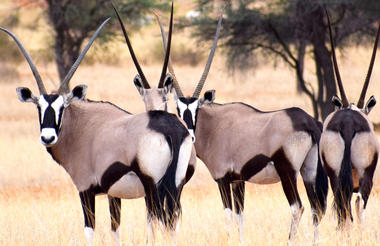
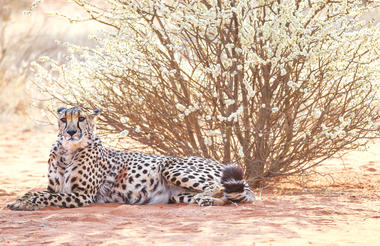

Kalahari – Fish River Canyon area (400 km) (BLD)
An early morning departure to the town of Mariental and south to Keetmanshoop. Just outside the town you have the opportunity of visiting the Mesosaurus Fossil Site.
We travel via the town of Keetmanshoop for overnight on the Fish River area. Here you have the opportunity of seeing the Quivertree. Quiver trees are not in fact trees, they are a type of aloe, (Aloe Dichotoma), so called becausethe branches fork “dictomously”. These weird looking plants dot the landscape in this part of the world and are locally common, however they are one of the world’s rarest flora species.



Fish River area – Luderitz (430 km) (BL)
The Fish River Canyon in Namibia is (allegedly) the 2nd largest canyon in the world after the Grand Canyon. The immensity of this magnificent landscape is truly breath taking. The towering rock faces and deep ravines were formed by water erosion and the collapse of the valley due to movements in the earth's crust over 500 million years ago. Today the canyon measures 160km long up to 27km wide and almost 550m at its deepest. It is fair to say that when you arrive at the canyon though, its exact location is a bit of a mystery as the 500m vertical drop from the flat dry plateau is completely out of view.
Early morning, we head to the main view point where we can see how impressive this canyon actually is. This is an ideal opportunity for photos and to spend some time experiencing this amazing sight. Viewing from the top we can see the river sparkling in the sunlight far below us, and can barely imagine how many millennia it took for the forces of erosion to carve such a magnificent vista.
Time to pack up camp and move on to our next destination, the coastal town of Lüderitz where its colonial-style buildings cling to the rocks overlooking the bay, on some days a deep iridescent blue, on others grey and stormy, the crisp fresh climate, fishing boats bobbing up and down on the Atlantic horizon, penguins and seals diving beneath the waves, give the town a curious other-worldly allure.
We aim to arrive at our guest house during the late afternoon. Dinner will be at client’s own expense tonight.
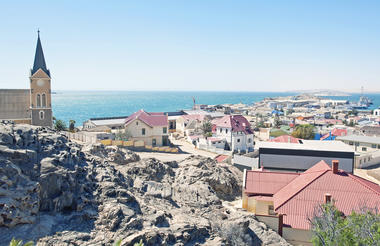
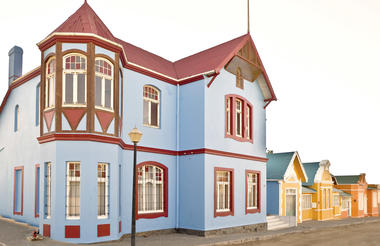
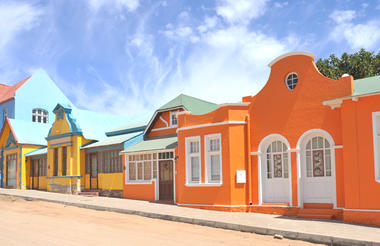
There is time to join an optional extra excursion, a marine trip, take a cruise around Luderitz bay and, weather permitting, to Halifax Island to see the Jackass Penguins. N.B: The boat cruise is subject to availability and, ifundertaken, will be for the client’s own risk and expense.
Time to explore Luderitz Town with its traditional German architecture and later we will take a drive out to Diaz Point to see the bird life, hopefully a few seals and the stone cross replica, originally erected by the Portuguese mariner Bartholomew Diaz.
Straight after the marine trip we drive out to Kolmanskop, a desert ghost town about 20 km out of Luderitz. It wasbuilt in the 1920’s during the diamond rush and was abandoned when bigger and better diamonds were found further along the coast. The area is still abandoned and the desert has encroached over the entire town, giving aneerie feeling and real meaning to the word “ghost”.
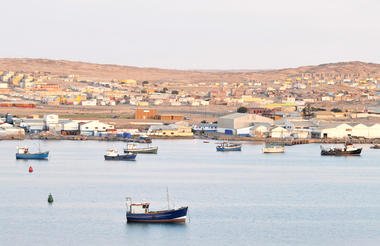
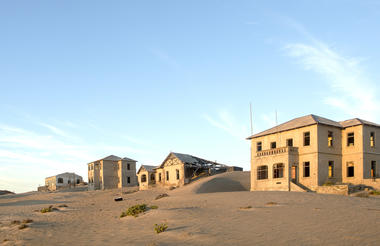
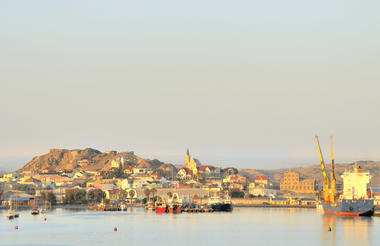
Luderitz – Sesriem area (125 km) (FB) (accommodation)
Turning north, we once again head deep into the ancient southern Namib, travelling on small gravel roads and passing some tiny rural communities along the way. The scenery is harsh, and sometimes forbidding. The process of erosion in these areas is well advanced and we pass time rounded “koppies” arid terrain and outcrops of torturedrock.
Traversing this bleak yet beautiful landscape, the terrain begins to change and we cross some open grass savannah and farmlands before the terrain begins to give way to the immense red sand dune desert of the Namib. We aim to arrive at our lodge during the late afternoon and watch the colours glow and change on distant mountains to the east.
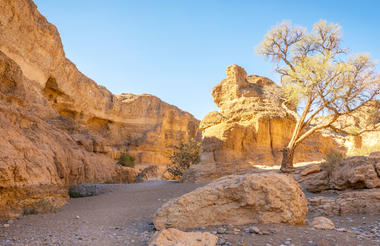
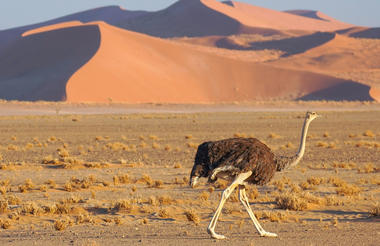
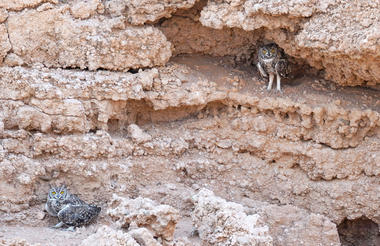
Sesriem area– Sossusvlei – Sesriem area (FB) (Accommodation)
A pre-dawn start is essential this morning as we want to catch the soft light of the sunrise on the desert. After passing through Sesriem, the gateway to the dunes, we head into the heart of the dune field, reaching Sossusvlei on foot, trekking the last 5 km through the dunes. Landscape photo opportunities abound in the cool of the morning,with dawn’s soft light first illuminating the dunes from crest down the back slope, then blazing orange everywhere,creating a powerful contrasting vista across the whole desert.
We spend the morning in and around Sossusvlei and Deadvlei, also visiting dune 45. Sossusvlei is where you will find the iconic red sand dunes of the Namib. The clear blue skies contrast with the giant red sand dunes to make this oneof the natural wonders of Africa and a photographer’s heaven.
As the day wears on we return to Sesriem for lunch, escaping the heat of the afternoon. As the day cools off in the late afternoon, we will take a short excursion to the Sesriem Canyon. Sesriem Canyon, a deep chasm carved through the rocks by water, is a striking natural feature of the area that is best explored on foot. Stony walls rise up sharplyon both sides of the canyon, while birds roost in its crags and lizards dart along the ledges. The canyon’s name wascoined when early settlers used it as a water source, using six lengths of leather (‘ses riem – six thongs) tied together to lower buckets into the water at the base of canyon.
Return to the lodge for the overnight.



Sesriem –Windhoek (370 km) (BL)
After breakfast we begin our journey, over the mountains and along scenic roads, back to Windhoek. We will travel over the Naukluft Mountains and also the Khomas Hochland Range, through beautiful mountain passes on our way back to civilization.
We are due back into the city after 16:00 and you will be dropped off at your accommodation on our return.
Today you will be picked up at an agreed time and transferred back to the airport ready for your onwatd floght or flight home.






